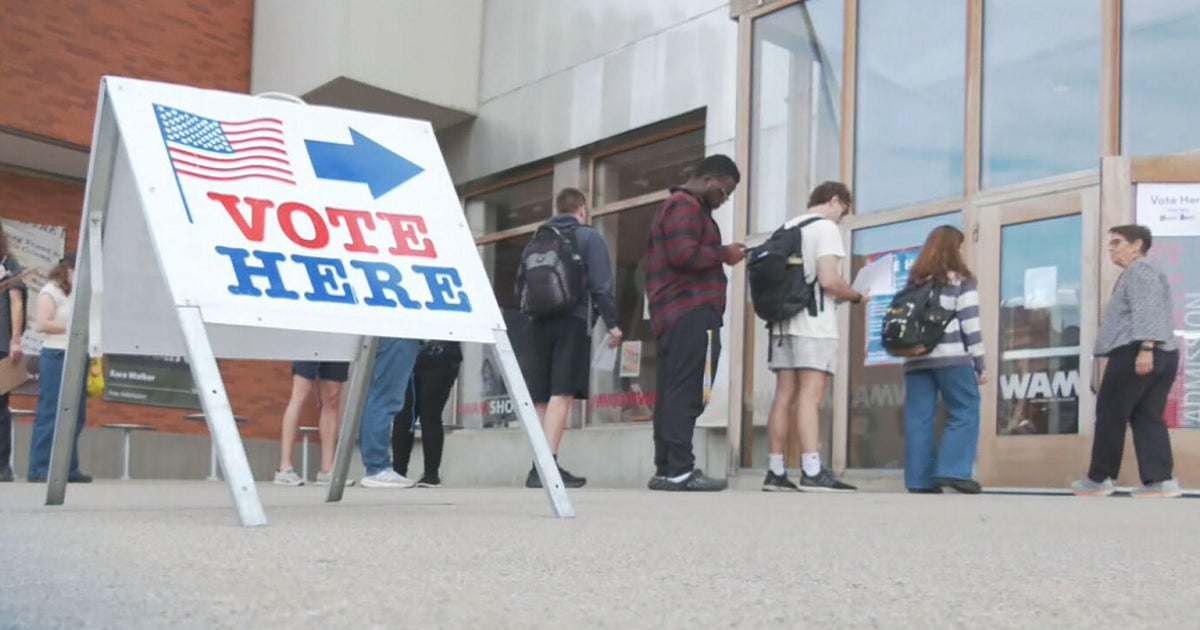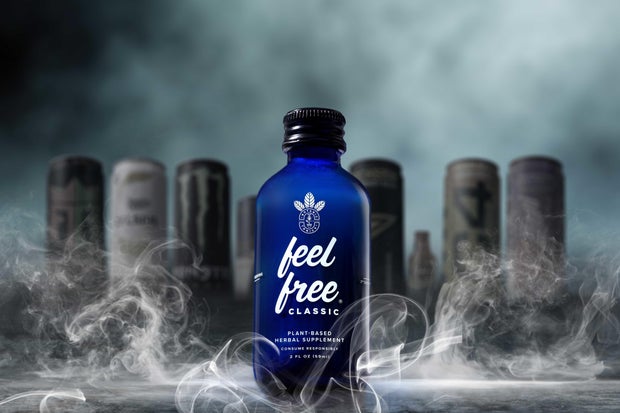CBS News
Inside Hungarian Prime Minister Viktor Orbán’s not-so-secret mission to elect Trump

During a speech this summer in front of thousands of supporters, Hungary’s far-right prime minister, Viktor Orbán, detailed the close connections he has nurtured with former President Donald Trump.
“We have entered the policy-writing system of President Donald Trump’s team,” Orbán said. “We have deep involvement there.”
The former president speaks highly of the Hungarian leader, too. During his debate with Vice President Kamala Harris, Trump described Orbán as one of the world’s “most respected men” — a “strong man” and “a tough person.”
Beneath the close public relationship between the two leaders are what sources have described as frequent and detailed exchanges that delve deeply into political and governing strategy. Should Trump win the election next week, theirs could become a defining foreign policy relationship for a second Trump term.
“Orbán put all his cards on Trump’s victory,” one source close to the Hungarian government told CBS News – a reality Orban is not shy about broadcasting.
“Just got off the phone with President @realDonald Trump,” Orban posted on X on Thursday. “I wished him the best of luck for next Tuesday. Only five days to go. Fingers crossed.”
While those close to Orbán and the Trump campaign have declined to specify the precise nature of the private communication between the two, sources close to the Hungarian government describe the use of Hungarian government-funded think tanks as conduits used to exchange information with conservative U.S. think tanks on topics like Ukraine, family policy and winning elections.
“As left-wing parties have been helping each other for the past hundred years, with policies and also sometimes with campaign tactics, it is quite possible that conservatives from across the globe from India to Europe to America could help each other with some of the best practices in campaigns as well,” Istvan Kiss, of Danube Institute, a pro-government think tank in Budapest told CBS News.
A focus on “how to win”
In his 14 years in power, Orbán’s government has passed legislation that targeted asylum seekers, non-governmental organizations, LGBTQ+ individuals, and the independent press. The ruling party, Fidesz, passed a law that transferred control of Hungary’s main state universities to foundations run by Orbán’s allies. And Orbán has become known for xenophobic and racist statements, calling refugees “Muslim invaders” and saying Hungarians do not want to become a “mixed race.”
Orbán’s administration has urged the Trump campaign to chart an isolationist path on the Ukraine conflict, with think tanks playing a pivotal role in delivering that message. Communication flows openly between Hungarian and conservative think tanks in the U.S. and then is funneled to members of Trump’s campaign staff, according to multiple sources close to the Hungarian government, all of whom spoke on the condition they remain unnamed out of fear of reprisal.
A polling firm called KÓD Piackutató Intézet, which is linked to the pro-Orbán think-tank Századvég Foundation shares information with allies of the Trump campaign that focuses on “how to win elections,” according to a source close to the think tank.
Századvég Foundation was founded in 1993 to conduct political research. It’s known for working with American political GOP consultants, including the late Arthur J. Finkelstein, who also worked on campaigns for Israeli Prime Minister Benjamin Netanyahu and Ronald Reagan. Századvég relies on a trademark formula: “creating an enemy.”
The Századvég Foundation is one of a handful of Hungarian think tanks that use Hungarian taxpayer funds to initiate pro-government objectives, which include pushing for closer relationships with foreign governments.
One of the closest bonds is between the pro-Orbán Danube Institute and the Washington, D.C.-based Heritage Foundation, a conservative think tank recently known for its role in a possible Trump transition plan known as Project 2025.
Dr. Kevin Roberts, president of the Heritage Foundation, described Orban’s leadership as a “model for conservative governance” during a press briefing earlier this year. Former president Trump has denied any involvement in Project 2025. Members of the two think tanks have held in-person meetings every three months, both in Washington, D.C., and Budapest, where experts discuss issues such as the Ukraine war and immigration, according to sources close to both institutions.
In 2023, the Danube Institute also agreed to host visiting researchers from The Heritage Foundation to study Hungarian policies in various fields. Heritage and Danube signed an agreement in 2023 that involved no financial transactions by either party, CBS has learned. Through cooperation with right-wing intellectuals abroad, the Danube Institute has proved instrumental in promoting the culturally conservative vision of Orbán’s Hungary.
“I am proud to call Viktor Orbán a friend and ally, and I am proud of the strong relationship between Heritage and The Danube Institute,” Kevin Roberts, President of The Heritage Foundation told CBS News.
“Hungary is an example for all of Europe in how it promotes family values and national sovereignty, as well as for its implementing an immigration policy that puts the interest of the common man first,” Roberts said. “While Heritage does not take a cent from foreign governments or institutions, we are working alongside conservatives around the world to end the globalist era.”
These cross-border initiatives appear to be part of a foreign policy strategy for Orbán. A recent investigation by the independent Hungarian news outlet Atlatszo revealed that government funding has enabled the Danube Institute to pay more than $1.64 million to its foreign partners over the past three years. Danube’s payments to visiting scholars, writers, and speakers, predominantly from the U.S., have risen during that time.
Cooperation between the Heritage Foundation and Hungarian government proxies like the Danube Institute, became more active after the 2020 elections, according to Atlatszo’s investigation.
The Danube Institute, for instance, paid a visiting lecturer from the Texas Public Policy Foundation $8,400 to write a 10-page paper “on Hungarian migration policy and lessons learned for the state of Texas,” according to a 2024 contract described by the Hungarian news outlet.
That Texas public policy author, Melissa Ford Maldonado, previously worked for the Trump White House as a fellow at the Office of American Innovation and then at the Domestic Policy Council. Maldonado did not respond to CBS News’s request for comment.
“The Orbán government has clearly invested a lot through a variety of means trying to shape U.S. public opinion,” said one senior U.S. official who closely tracks those communications.
Hungary has not hired agents in Washington to lobby for its interests – it is one of the few nations without a single active firm or individual registered with the U.S. Justice Department, a requirement for all foreign government lobbyists.
Security concerns
Think tanks are not the only channel for communication between the Hungarian government and the U.S.
“Viktor Orbán and a few higher-ranking people around him frequently exchange text messages with high-level Republican politicians,” a source close to the Hungarian Embassy in Washington, D.C., said, suggesting that Orbán wants to keep a close eye on U.S.-Hungary relations. “Which can raise security concerns.”
One of these Republicans is Trump’s running mate, U.S. Sen. JD Vance of Ohio. Vance met with Hungarian officials in Washington D.C, and he is one of the most vocal U.S. senators in support of Orbán.
“I think Orbán made smart decisions that we could learn from in the U.S.,” said Vance in an interview with CBS’ “Face the Nation with Margaret Brennan” in June 2024.
Vance was invited to Budapest in the fall by individuals close to the Hungarian government, CBS News has learned. He canceled the trip but some in his party have paid frequent visits to Hungary during the past year and reciprocated the invitation to Washington to their Hungarian counterparts.
In February, Vance attended a closed-door event at the Hungarian Embassy in Washington, D.C., about Christian values and Hungary’s pro-family policies, a source close to the Hungarian Embassy told CBS News. The source said political director Balazs Orbán (no relation to Viktor Orbán) is frequently in touch with Trump’s running mate.
Multiple sources in Washington called Balazs Orbán “a key figure in building relationships” between Hungary and Trump’s team. “He plays a very active role in this,” one source said.
The former president’s son, Donald Trump Jr., visited Budapest in June, to give a speech at Mathias Corvinus Collegium. His visit focused on the future of Hungarian-American relations, the war in Ukraine and opportunities to forge peace. A source close to the Hungarian embassy said Trump Jr.’s invitation served the same purpose as Vance’s: “building a network of people Orbán can contact directly” in case Trump wins the presidency.
Balazs Orbán met Vance in April 2023 in Washington, D.C. He called Vance a “good friend of Hungary” and thanked him for standing up for their shared values in a post on X.
Vance has previously praised Viktor Orbán, saying the U.S. “could learn from” some decisions made by the Hungarian leader, particularly when it comes to “eliminating left-wing bias” in educational institutions.
The active information exchange has come at a fragile moment for U.S.-Hungary relations. Last month, five Republican U.S. senators returned from a trip to Hungary with a blunt declaration – that Orbán’s government had displayed a noticeable shift toward Russian President Vladimir Putin.
“Our delegation and many of our congressional colleagues are increasingly concerned by Hungary’s deepening and expanding relationship with Russia and the continued erosion of its democratic institutions,” U.S. Sen Jerry Moran, a Republican from Kansas, said in a statement released by senators after the visit.
The Senate delegation was led by Moran and also included Sens. Susan Collins of Maine, John Cornyn of Texas, John Boozman of Arkansas, and John Hoeven of North Dakota.
“We have Hungary as an ally of the U.S., and we are deeply concerned with the extent of democratic backsliding in Hungary as well as Hungary’s choices of deepening ties with Putin’s Russia and Xi’s China,” one senior U.S. diplomat told CBS News. “That’s where our focus is.”
Orbán is widely seen as Putin’s closest ally in the EU — he frequently repeats pro-Kremlin talking points about the Ukraine war. And he has vetoed multiple EU decisions to support Ukraine since Russia’s full-scale invasion started.
Orbán’s relationship with Trump has only strengthened since the former president left office in 2021. The two met in July at Mar-a-Lago during Orbán’s “peace mission” right after visiting Russian President Vladimir Putin.
Péter Krekó, the director of the Budapest-based Political Capital research institute called the timing of the Mar-a-Lago meeting, on the heels of the Putin visit, “symbolic,” noting that they both offered similar “pro-peace” message about the conflict in Ukraine.
“The success of Hungarian soft power has been biggest in the United States,” said Kreko, whose think tank is not government-sponsored. “Classic soft power tools made it possible: personal connections, investments in media ties, and diplomacy [between think tanks] — all with a lot of money.”
The Trump campaign, Sen. Vance, and Prime Minister Orbán’s political director, Balazs Orbán, did not respond for comment.
Századvég Foundation, KÓD Piackutató Intézet, and the Danube Institute did not respond to a request for comment from CBS News.
CBS News
He thought his heart was in perfect health. An advanced scan showed something alarming.

When Chris Abrunzo was in his early 20s, his father was struck by the kind of heart attack known as a “widow maker.” The severe cardiac events are often fatal, and while Abrunzo’s father survived, it inspired him to take his heart health seriously, since family history is one of the strongest indicators for developing heart disease later in life.
Abrunzo started getting regular cardiac checkups and he made sure to work out frequently and eat well. As the years passed, tests continued to show he was in great health except for some elevated cholesterol that he treated with medication. He had no symptoms of heart disease. In 2023, a family friend told him about a newer, more detailed test that offered a view of the arteries without any invasive procedures.
“I go in thinking I’m going to get a scan and be told ‘You’re doing a great job,'” Abrunzo recalled. “Well, I get scanned, and the scan reveals that I had areas of plaque buildup, many of which would not show up on an echocardiogram or a stress test, but that showed up on this scan. One of those areas was around 70% blocked.”
High blockage in arteries can cause heart attacks. While the blockage Abrunzo found wasn’t in a crucial artery, it was in a place that would be difficult to treat with surgery, so he knew he had to focus on reducing the buildup. He was prescribed more medications, and further adjusted his diet and exercise regimens. During a checkup last month, Abrunzo was told that the blockage was only occluding about 40% of his artery, putting him at far lower risk for a sudden cardiac event.
Chris Abrunzo
“I think this just the ability to look inside there is just something that’s miraculous and probably saved my life, not in the very near future, but probably in my mid-50s,” said Abrunzo, now 47. “It’s like magic.”
What is cardiac CT angiography?
A cardiac CT angiogram is a test that essentially conducts “a CAT scan for the heart,” said Dr. Aeshita Dwivedi, a cardiologist at Northwell Health. The full-body scanner captures 3D images of the heart and the arteries that supply blood to the organ. Some scanners can take the image in less time than it takes a heart to beat. Doctors can study that 3D image for blockages, plaque buildup, and other warning signs for cardiac disease, Dwivedi said.
It’s far more advanced than what more common noninvasive tests, like the echocardiograms and stress tests Abrunzo was doing, can do.
“Usually you have to have greater than a 70% blockage in the arteries to have an abnormality on a stress test,” said interventional cardiologist Dr. Tony DeFrance. “And that’s really kind of a problem, because a lot of times people have echocardiograms, calcium tests, stress tests, and they say ‘Oh, you’re fine, your heart’s strong.’ That probably means they don’t have a 70% blockage. But we’ve found out over the last couple of decades it’s not the 70% blockages that cause the heart attacks. It’s often the 20% and 30% blockages.”
Clear Heart and Lung Imaging
The test can also look at the plaque, or buildup of cholesterol, fat, blood cells and more that can narrow or block arteries. Vulnerable plaque, when found, is often a warning sign for a sudden cardiac event. More than half a million Americans die from such events each year, DeFrance said.
“Vulnerable plaques … are the ones that when they tear or rupture, those cause heart attacks,” DeFrance said. Stable, or calcified, plaque is less harmful, though it may cause chest pain and narrow the heart’s arteries.
Expanding access to cardiac CT angiograms
Cardiac CT angiograms were first used in the early 2000s, said DeFrance, and the past decade has seen an increase in their use. He himself has founded the Society of Cardiovascular CT and trained thousands of physicians on the technology. In 2022, the American College of Cardiology issued guidelines recommending cardiac CT angiography as an evaluation tool for patients complaining of chest pain.
For Kim and Matt Mischo, expanding access to cardiac CT angiograms is personal. Matt Mischo believed he was in perfect health, but Kim, who worked in health care administration, convinced him to get a cardiac CT angiogram after she tested the technology herself during a work trip. She was worried about his family’s history of heart disease, even as he insisted he was in good health and had never had any worrying cardiac exams before. Finally, the active husband and father of four underwent the test — and found that he was on the verge of a massive heart attack, with large blockages in multiple key arteries.
Clear Heart and Lung Imaging
“I thought I was always invincible,” Matt Mischo told CBS News. The news made him scramble to book an appointment with a cardiologist, and he was warned he might need open heart surgery and as many as three stents to avoid a major heart attack. Luckily, he was able to remove the plaque with an atherectomy, a minimally invasive procedure where plaque is removed with a catheter. The experience inspired the couple to open their own imaging center.
Since June, the Clear Heart and Lung Imaging Center has seen more than 300 patients. Kim Mischo estimated that of those hundreds, about 40% have found they had “some level of coronary artery disease.” DeFrance works at the center, helping review the images taken and developing treatment plans for patients.
“The number one killer now, worldwide, is cardiovascular disease,” DeFrance said. “Our current workup doesn’t catch most people … Our current paradigm is missing a lot. Working towards prevention, identifying the disease early so we have many more options, is crucial.”
CBS News
This kratom drink was marketed as an alcohol alternative to be sold over the counter. Some consumers say it led to addiction.

When Jasmine Adeoye, an account manager based in Austin, Texas, decided to stop drinking in June 2022, she turned to a kratom beverage advertised as an alcohol alternative. Within a year and a half, Adeoye said she was addicted to the drink, “Feel Free Classic,” lured by what she calls the company’s deceptive marketing tactics.
The 29-year-old account manager based in Austin, Texas, said her favorite podcasters promoted the drink, which the company Botanic Tonics manufactures and sells, as “a miracle” beverage that could help people trying to overcome addiction and embrace sobriety. Having struggled with binge drinking in the past, Adeoye was intrigued.
Jasmine Adeoye
She said she was unaware the drink contained kratom, a plant native to Southeast Asia that can produce feelings of energy, ease anxiety and reduce pain— but carries a risk of addiction, seizures, and very rarely, death. Since kratom is unregulated in the U.S., some products are sold in highly concentrated forms and could contain contaminants like heavy metals and harmful bacteria, according to the National Institute on Drug Abuse.
Eventually, Adeoye says she was drinking up to 10 two-ounce bottles a day and spending around $100 daily. The company recommends consumers drink no more than a bottle daily. By then, she said, her life revolved around the drink and she needed to make sure she had access to it wherever she went.
A drink advertised an #alcoholalternative
Then came the withdrawals, which some consumers compare on social media to withdrawing from an opioid.
“When I would wake up, I’d be ‘dope sick’, essentially, and need to go straight to the gas station and go buy Feel Free to immediately feel better,” Adeoye said.
This past March, after one bout of withdrawal symptoms was so severe, she sought medical care close to her home in Austin. She hadn’t told the doctors she was struggling with kratom use, she said, and they chalked her symptoms up to a virus.
“All of a sudden, it just spirals out of control and you get to a point where you feel like you can’t live without them,” she said. “And you become just a shell of a person.”
Adeoye, who was trying to stay sober from alcohol, said she unwittingly found herself in the throes of addiction — and she’s not the only one.
A forum on the social network Reddit called r/quittingkratom has more than 45,000 members while a forum dedicated exclusively to quitting Feel Free has nearly 3,000. There are podcasts, support groups and books dedicated to quitting kratom.
In 2023, a class action lawsuit was filed in California against Botanic Tonics alleging that the drink was advertised as a safe alternative to alcohol. The company used social media to reach its “desired customer base,” the lawsuit states, which included individuals who had struggled with addiction. According to the 2023 suit, Botanic Tonics posted over a thousand advertisements on Instagram using the hashtag #alcoholalternative. The suit also says that advertisements on Instagram omitted any mention of kratom or potential side effects.
CBS News spoke with another consumer about their experience with Feel Free Classic who also described the drink’s appeal as an alcohol alternative, and said they had become addicted to the beverage and eventually experienced withdrawal symptoms.
AP
The company told CBS News in a statement it “fell short of the high standards of transparency and consumer education that our company now champions.” And they’ve taken steps for “continuous improvement and doing what’s right for consumers.”
Botanic Tonics said they’d implemented changes including enhanced labeling, raised age restrictions to 21 and over, investing in clinical research, expanded consumer education resources and maintained rigorous manufacturing standards in FDA-registered, cGMP-certified facilities.
CBS News found through an internet search that Feel Free Classic was featured in at least 22 podcasts. The company’s founder, JW Ross, has spoken openly with podcast hosts about his previous struggles with alcohol, and how Feel Free Classic was developed as an alternative.
“We make a powerful product. That product works for a lot of people, but it doesn’t work for everyone,” Botanic Tonics said in a statement to CBS News. “Our priority as a company is making sure it gets into the right hands, which is why it’s so important for us to focus on informing people who have issues with substance abuse that it isn’t for them.”
Upon the lawsuit’s settlement in September, Botanic Tonics said it would issue clear labels and warnings — but around the time Adeoye began taking Feel Free Classic and ultimately became hooked, the website advertised the drinks to be “used for productivity enhancement or as a healthy alcohol alternative.” As recently as January 2024, a banner on the website read “cheers to a dry January.”
Kratom risks not fully known by the public
Kratom is used by an estimated 2 million to 15 million Americans. As kratom’s use rises in the U.S., so do the risks. The FDA warns the public against consuming kratom for medical use due to the risk of liver toxicity, seizures and substance use disorder; the DEA classifies it as a “drug of concern” and warns that it can lead to addiction. Botanic Tonics said, “while leaf kratom can lead to physical dependence, its risk profile is significantly lower compared to many other commonly used substances.” The company pointed CBS News to comparative safety practices and FDA studies available on the Global Kratom Coalition website, an advocacy group promoting the use of kratom.
It is rare to overdose from kratom alone – a vast majority of the overdoses typically include an accompanying substance like alcohol or cocaine. But it does happen.
Wrongful death suits in Florida, Georgia, Texas, Oregon, Pennsylvania and Washington followed. The family of a Florida woman whose death in 2021 was attributed to a chemical compound found in kratom was awarded $11 million in a wrongful death lawsuit. Last year, $2.5 million was awarded in the first kratom wrongful death trial in the United States. A kratom company based in Washington State was found liable for negligence among other claims relating to the death of a 39-year-old who was found dead in his living room after consuming kratom.
Despite kratom’s potential for addiction and subsequent withdrawal symptoms, it has gained a reputation among the online sobriety community as a method to self-manage opioid withdrawal — which has not yet been scientifically proven.
Adeoye said even though information about the dangers of kratom was readily available, she didn’t understand the associated risks. If she could go back two years, she said, she would have researched the ingredients “as heavily as possible.”
“To my knowledge, it was something that was similar to matcha, like a tea or a coffee,” Adeoye said. “So, thought it was completely harmless.”
Scrutiny grows around kratom marketing
Botanic Tonics isn’t the only kratom product company that has come under scrutiny.
In July, the FDA issued a warning advising consumers against using OPMS Black Liquid Kratom, which “has been linked to serious adverse health effects, including death,” according to the agency. Shot of Joy, which sells kratom shots, was issued a warning letter by the FDA in 2023 stating the company markets their products for the “treatment or cure of opioid addiction”— a claim the FDA says has not been determined by the agency. In a series of Instagram advertisements viewed by CBS News, Shot of Joy promotes their beverage as an alcohol alternative. The FDA has issued warning letters to ten companies that sell kratom products between 2019 and 2023.
After nearly two years of silently struggling, Adeoye told her mom, and then her husband following that medical visit. She was ready to quit.
She spent the next few days detoxing at home.
“I couldn’t eat anything. My mom had to force me to eat,” she said, noting that she had to have someone with her “around the clock.”
Though the physical withdrawals tapered off after about three days she says it took six months to feel regulated mentally.
“It’s very depressing to feel this emptiness,” Adeoye said of quitting kratom. “You feel like life is never going to be the same.”
Botanic Tonics’ FAQ page now includes a section addressing past marketing practices.
“Our marketing strategy has changed dramatically in the past year, but not as a reaction to the lawsuit filing,” the statement reads. “As our business has grown, specifically in retail, we’ve shifted marketing focus accordingly.”
CBS News
National Ballet of Ukraine completes first U.S. tour in decades

Watch CBS News
Be the first to know
Get browser notifications for breaking news, live events, and exclusive reporting.












